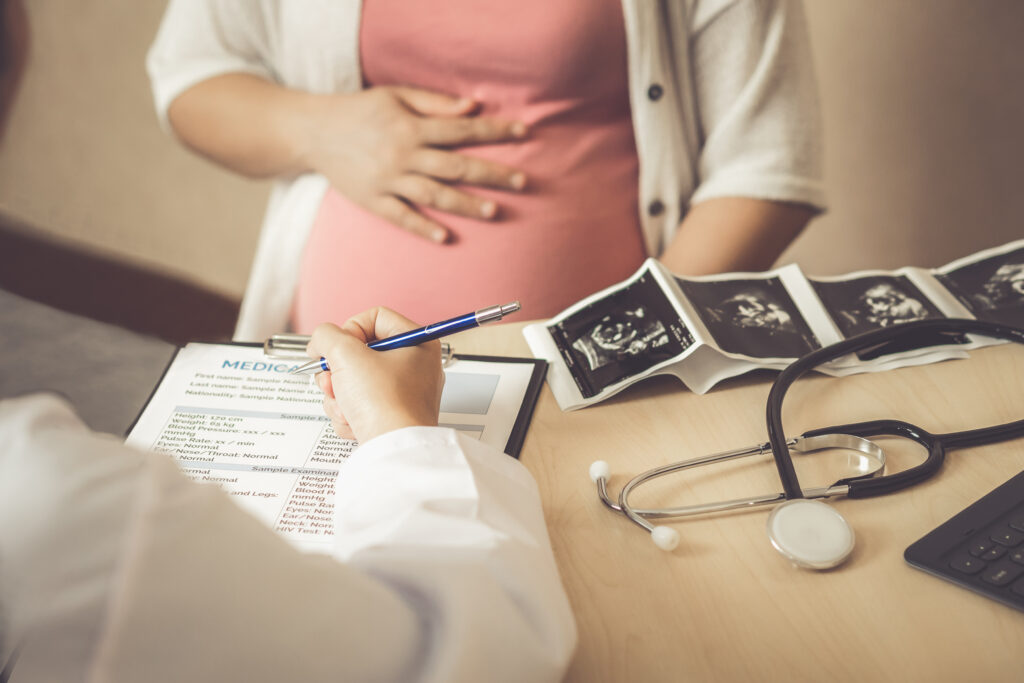
For many women, the first trimester of pregnancy is the hardest. Those first few months can bring symptoms such as morning sickness, loss of appetite, and sleep deprivation. While the second trimester tends to be easier for expectant mothers, it’s also when preeclampsia tends to strike.
What Is Preeclampsia?
Preeclampsia is a serious condition that happens about halfway through the second trimester—usually after the 20th week. In some cases, it may occur after giving birth (postpartum preeclampsia).
With preeclampsia, expectant mothers may develop high blood pressure (hypertension) or have abnormally high protein levels in their urine (proteinuria). It is often a sudden change in women whose blood pressure was previously normal.
Worldwide, preeclampsia occurs in 2% to 10% of pregnancies. It is a leading cause of death for mothers and babies, and if left untreated, it can lead to serious complications. However, mothers with preeclampsia can have healthy babies. But knowing what to look for and when to go to the doctor is important.
What Are the Symptoms of Preeclampsia?
In addition to hypertension and proteinuria, signs and symptoms of preeclampsia include:
- Headaches that don’t go away
- Nausea or vomiting
- Shortness of breath
- Sudden weight gain
- Swelling in the face, hands, or legs
- Upper belly pain
- Vision changes
Some of these symptoms can occur with healthy pregnancies. But they should still be taken seriously. If you are expecting, make sure you go to all your prenatal visits, even if you feel fine.
What Causes Preeclampsia?
The exact cause of preeclampsia isn’t known. Because of that, it has been called the “disease of theories.” One theory is that preeclampsia occurs when there are problems with the placenta. The placenta is a temporary organ that develops during pregnancy. It attaches to the uterus lining and delivers nutrients and oxygen to the fetus through the umbilical cord.
In women with preeclampsia, the placenta doesn’t develop properly. It doesn’t get enough blood, disrupting the blood supply between mother and baby. This can affect the blood vessels and cause hypertension.
Who Is at Risk for Preeclampsia?
Preeclampsia is most common in a first pregnancy. However, women who had preeclampsia in a previous pregnancy are seven times more likely to develop preeclampsia in subsequent pregnancies.
Other risk factors for preeclampsia include:
- Age—Women who are 40 or older are at higher risk for preeclampsia than younger women.
- Autoimmune disorders
- Being pregnant with multiple babies
- Chronic high blood pressure or kidney disease before pregnancy
- Diabetes, type 1 or type 2
- Existing high blood pressure or preeclampsia in a previous pregnancy
- Family history
- Race and ethnicity—Black and African American women have a higher risk of preeclampsia than other women
- Time between pregnancies—Having more than ten years between pregnancies is associated with a moderate risk of developing preeclampsia
Despite these risk factors, there is no way to know why some women get preeclampsia, and others don't.
How Is Preeclampsia Treated?
If the pregnancy is at 37 weeks or later, the doctor may recommend delivering the baby to prevent further complications. If the pregnancy is less than 37 weeks, the doctor may recommend bed rest to lower blood pressure and encourage blood flow to the placenta.
Can Preeclampsia Be Prevented?
Clinical evidence shows that low-dose aspirin can help prevent preeclampsia. However, talking to your doctor before taking any medication is important. If you have a high risk of preeclampsia, your doctor may recommend taking an 81 mg aspirin after 12 weeks of gestation.
What Are the Complications of Preeclampsia?
Preeclampsia can cause several complications for moms and babies. These include:
- Eclampsia—Seizures or comas that occur in pregnant women with preeclampsia.
- Hemolysis elevated liver enzymes and low platelet count (HELLP) syndrome—A rare but life-threatening type of preeclampsia that affects the blood and liver.
- Placental abruption—The placenta separates from the inner wall of the uterus before delivery, potentially causing heavy bleeding.
- Preterm birth—Delivery before 37 weeks is considered preterm.
Early detection of preeclampsia is critical for preventing complications. However, some women with preeclampsia do not feel ill. Some symptoms, like high blood pressure, may not be obvious to you, but can be caught during prenatal appointments.
If you are diagnosed with preeclampsia, organizations like the March of Dimes and Preeclampsia Foundation can help you learn more about the condition and how to manage it. Your doctor can also provide you with educational material.
Resource Links:
"Preeclampsia" via Medline Plus
"Preeclampsia Incidence and Its Maternal and Neonatal Outcomes With Associated Risk Factors" via Cureus
"Cause of Preeclampsia" via Preeclampsia Foundation
"Preeclampsia" via Mayo Clinic





